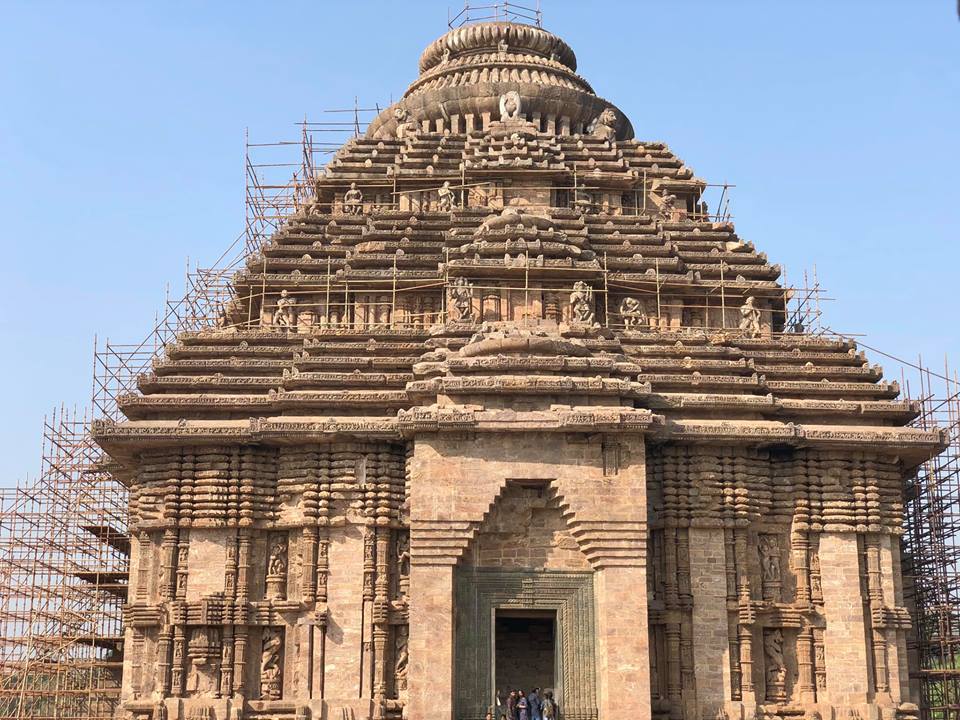
Konark Sun Temple Puri Orissa.
Konark is a city in Puri district in the Indian state of Orissa, built in the 1300s. The temple is believed to have been built by Narsinghdev, the first Narsinghdev of the East Ganga dynasty, in 1255 AD. The temple is a world heritage site and is also on the various lists of seven wonders in India. The temple is located 35 km from Puri and 65 km from Bhubaneswar.
The name Konark is a combination of the Sanskrit words kona (kona or kona) and ork (sun), which was dedicated to the sun god mentioned in the temple. This temple carries important meanings of different positions of the sun.
The monument was also called the Black Pagoda by European sailors. In contrast, the Jagannath Temple in Puri was known as the White Pagoda (White Pagoda). Both temples were considered important places of interest for sailors. Iron beams were used for the infrastructure of the Konark Sun Temple.
The huge idol of the sun god in the temple is no more. Much of yesterday’s Coral Grass installation has been destroyed today. There are several reasons for this. First, the Konark temple was first destroyed by the attack of Kalapahar, the general of Sultan Sulaiman Khan Karnani of Bengal. According to the history of Orissa, Kalapahar was attacked by Konark in 1506. Second, Narsinghdev was expelled for marrying a Muslim girl. So he destroyed the temple himself. Thirdly, in 1826, Khurshid took the idol of Narshimadeva Suryadev, the son of the then king Purushottamdev, to the temple of Jagannath in Puri. The idols of the sun and moon gods are placed in a separate temple there. Not only idols but he also took many stone carvings from Konark temple to Puri temple. He even took a huge piece of stone called Navagraha Path to Puri. During the Maratha rule, many sculptures and stones from the Konark temple were taken to Puri. In 179, a huge pillar named Arun Kumbh was erected from Konark in front of the gate of Puri. At this time, the Maratha administration demolished the Nat Mandap in Konark, considering it unnecessary. After the removal of the idol of the Sun God, the worship and arati at Konark ceased.
Fourth, the port of Konark was closed due to constant attacks by Portuguese pirates. The Portuguese pirates destroyed the very strong magnet at the top of the Konark temple because of the difficulty in robbing the Portuguese pirates.
By the eighteenth century, the Konark temple had lost all its glory and lay in ruins. Many parts of the temple are buried under the sand. The temple precinct and its surroundings are gradually covered with dense forest. Wild animals nest inside the temple. The Konark Temple became a haven for pirates and robbers. At that time, even in the light of day, ordinary people could not go to its three borders for fear.
Construction and structure: –
The pinnacles of the Kalinga style temple are pyramid shaped. There is a Natmandap in front of the temple. Devdasis used to perform worship dances for the deities here. Inside the temple are Natmandir, Bhogmandir and Garbhagriha. The height of the temple is about 658 feet. However, many parts of the temple are now buried in the sand. The temple wall is still 200 feet high.
Built in a combination of Orissa and Dravidian architecture, the temple is built in the shape of a huge chariot on gray sandstone. A huge chariot of the sun god rising from the sea, with seven pairs of horses in front of it. Seven horses means seven days a week. The whole temple is built on twelve pairs of huge wheels. Twenty-four wheels means twenty-four sides. Wheelwork is a major attraction for visitors. Each wheel is a sundial. The paddles inside the wheels are the hands of the clock. Eight beards means eight o’clock. Yet the exact time is known with the help of this sundial. At the entrance of the temple there are statues of two huge lions who are fighting with two war elephants.
There is also a dance hall, a temple of the shadow goddess and a temple of Maya. Dance Festival is held in the temple premises in December every year. At that time many dance lovers came running from far away.
Sculptor: –
Even today, the Prothom-alo of dawn falls on the temple premises. The sculpture of the temple is unique. There are stone sculptures and carvings every inch from the altar to the summit. Goddess, Apsara, Kinnar, Yaksha, Gandharva, Snake, Man, Girl Bride Wedding Parade, Homosexuality, King’s War Preparation, Mridangkartal Veena, Mohini, Mithun Idol, Six Hand Shiva, Various Scenes of Rajdarbar, Replica of Mythological Events Couples, elephants caught in traps, hunting scenes are depicted on the stone chest. The human appeal of the sculptures, the perfect shape, the lilac posture are examples of the ultimate excellence of art. Statues of people lie on the arches of the temple. The lion is the symbol of strength and the elephant or the symbol of wealth.
Rescue: –
In the twentieth century, archaeologists rediscovered the Konark Temple. The Sun Temple, which had been neglected and neglected for 300 years under a sandstone mound, was rescued by Lord Curzon in 1904. But even before that, the original Sun Temple became extinct due to a catastrophe. What we see as a temple is actually a Nat temple, not a main temple As a result, the unique architectural style, wonderful sculptures and unique artistic potential of the Konark Temple are unveiled to the public.
Of Many of the artefacts of the Konark Temple are now housed in the Sun Temple Museum and the National Museum of Orissa.
How to get there: –
From Kolkata by bus / train to Puri. From Puri by bus / taxi to Konark Sun Temple. The distance from Puri to Konark Sun Temple is 35 km.